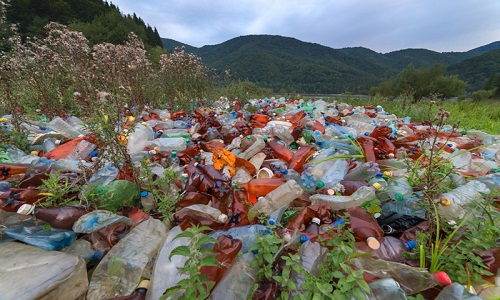"Brand Patagonia had commissioned a study to find out how many synthetic microfibers—the tiny bits of plastic that marine scientists say could be jeopardizing our oceans-are shed from its jackets in the wash. And the results aren't encouraging. It all started on a beach in Southwest England in early 2000. Richard Thompson, then a senior lecturer at Plymouth University (where he now serves as a professor of marine biology), was leading a team of graduate students researching microplastics in marine environments."

Brand Patagonia had commissioned a study to find out how many synthetic microfibers—the tiny bits of plastic that marine scientists say could be jeopardizing our oceans-are shed from its jackets in the wash. And the results aren't encouraging. It all started on a beach in Southwest England in early 2000. Richard Thompson, then a senior lecturer at Plymouth University (where he now serves as a professor of marine biology), was leading a team of graduate students researching microplastics in marine environments. Examining samples of sandy sediment, they expected to find degraded bits of marine plastic from decades-old flotsam or plastic beads that were becoming widely used in cleaners. To their surprise, most of the plastic fragments were fibrous, which meant that they likely came from clothing, rope, or some types of packaging.
The Mark Browne study

Then, in 2011, Mark Browne, one of Thompson’s former graduate students, published a study in which he examined sediment sampled from 15 beaches around the world. He found high concentrations of polyester and acrylic fibers in samples taken near wastewater treatment plants. He then ran a polyester fleece jacket through the wash and filtered 1,900 fibers (fibers that otherwise would have gone to the local wastewater treatment plant) from the wastewater. Browne started reaching out to apparel makers to see if they’d help fund research to study this issue more deeply. Eventually, he hoped, finding tweaks to fabric design or apparel construction that would stop the microfibers from entering wastewater. He received one offer of help from a women’s clothing brand Eileen Fisher, but Patagonia, Columbia, and other big brands declined to comment saying they didn’t know if the fibers were anything they needed to worry about
Fibers catch the eye of the people
Fast-forward four years later the fibers finally caught everyone’s attention. Studies further showed, wastewater treatment plants couldn’t filter out all synthetic fibers and toxins such as DDT and PCBs can bind to them as they make their way into watersheds, it also showed that small aquatic species ingest the fibers and fish and fish dealers sold for human consumption also contain microfibers. Experiments have shown that microplastics can lead to poor health outcomes in some species and research is underway to find out how the plastics affect humans.
Jill Dumain, Director of environmental strategy at Patagonia was one of the many watching all the news interestingly. In early 2015, she and the company’s leadership decided to commission a study to find out if and how her company’s iconic and well-loved fleece and some other synthetic products were contributing to the problem. The results recently came in, and they’re not very good.
To try to get ahead of the problem, Patagonia and other apparel companies have decided to research new yarn and fabric constructions to determine whether microfiber shedding can be addressed through better design, something that’s already happening in Europe.












